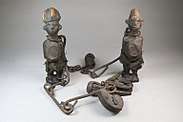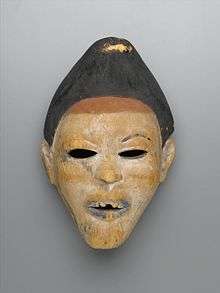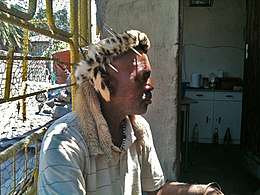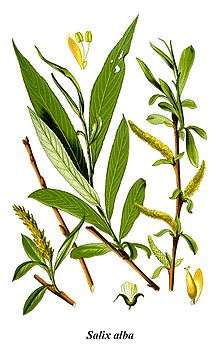Nganga
Nganga is a Kikongo language term for herbalist or spiritual healer in many African societies and also in many societies of the African diaspora such as those in Haiti, Brazil, and Cuba. It is derived from *-ganga in proto-Njila, an early branch of the Bantu family.[1] The verb form related to it, -gang- relates to wisdom, knowledge and skill. As this term is a multiple reflex of a Proto-Bantu root, there are slight variations on the term throughout the entire Bantu-speaking world.
| Part of a series on |
| Kongo religion |
|---|
 |
| Theology and concepts |
| Derivatives |

In Africa

The owner and operator of an nkisi, who ministered its powers to others, was the nganga.[2]
In the Kingdom of Kongo the term "nganga" was the name for a person who possessed the skill to communicate with the Other World, as well as divining the cause of illness, misfortune and social stress and preparing measures to address them, often by supernatural means but sometimes natural medicine as well. They were also responsible for charging nkisi, or physical objects intended to be the receptacle for spiritual forces. When Kongo converted to Christianity in the late fifteenth century, the term nganga was used to translate Christian priest as well as traditional spiritual mediators.[3] In modern Kikongo Christian priests are often called "Nganga a Nzambi" or "priests of God."
In South Africa, the inyanga has a medicinal role, in contrast to the sangoma, who deals with divination and the ancestral spirits, however, the distinction has become blurred in some areas and many traditional healers tend to practice both arts.[4][5] In Swahili, mganga refers to a qualified physician or traditional healer.
Shona N'anga/ Zulu Nyanga

Among the Shona people of Zimbabwe, a n'anga is a traditional healer who uses a combination of herbs, medical/religious advice and spiritual guidance to heal people. In Zimbabwe, N'angas are recognized and registered under the ZINATHA (Zimbabwe National Traditional Healer's Association).[6][7]
They are believed to have religious powers to tell fortunes, and to change, heal, bless or even kill people. Traditionally N’angas were people’s main source of help in all matters of life. They have existed for decades well before the British colonial era. Guerrilla leaders are said to have consulted with N’angas during the Rhodesian Bush War.[8]
Even today, N'angas are consulted by the people for advice and healing of many illnesses. Sometimes N'angas refer their patients to western medical practitioners and hospitals in case of emergency or illness they can't cure with the help of their healing spirit.[9]
Kongo nganga
An English missionary describes how an nganga looks during his healing performance:
Thick circles of white around the eyes, a patch of red across the forehead, broad stripes of yellow are drawn down the cheeks, bands of red, white, or yellow run down the arms and across the chest.... His dress consists of the softened skins of wild animals, either whole or in strips, feathers of birds, dried fibres and leaves, ornaments of leopard, crocodile or rat's teeth, small tinkling bells, rattling seedpods...[2][10]
This wild appearance was intended to create a frightening effect, or kimbulua in the Kongo language. The nganga's costume was often modeled on his nkisi. The act of putting on the costume was itself part of the performance; all participants were marked with red and white stripes, called makila, for protection.[2]
The "circles of white around the eyes" refer to mamoni lines (from the verb mona, to see). These lines purport to indicate the ability to see hidden sources of illness and evil.[2]
Yombe nganga often wore white masks, whose color represented the spirit of a deceased person. White was also associated with justice, order, truth, invulnerability, and insight: all virtues associated with the nganga.
The nganga is instructed in the composition of the nkondi, perhaps in a dream, by a particular spirit. In one description of the banganga's process, the nganga then cuts down a tree for the wood that he will use to construct the nkondi. He then kills a chicken, which causes the death of a hunter who has been successful in killing game and whose captive soul subsequently animates the nkondi figure.[11] Based on this process, Gell writes that the nkondi is a figure an index of cumulative agency, a "visible knot tying together an invisible skein of spatio-temporal relations" of which participants in the ritual are aware.[12]
In the Americas
In Cuba, the term nganga refers to a certain creation made with an iron cauldron into which several items (such as bones and sticks) are placed. It also refers to the spirit of the dead that resides there. In Palo, it refers to an iron cauldron used to venerate the mpungo which can be used for magic and divination.
In popular culture
In SimCity Societies: Destinations, a tribal shaman is named "Nganga".
See also
- Traditional African religions
- Traditional healers of South Africa
- Witch doctor
External links
- Nganga Kiyangala Congo religion in Cuba
- African Intellectual Heritage: A Book of Sources By Molefi K. Asante, Abu Shardow Abarry ISBN 1-56639-403-1
- THE STORY OF ZOMBI IN HAITI
- The African Religions of Brazil: Toward a Sociology of the Interpenetration By Roger Bastide ISBN 0-8018-8624-4
- An Anthology of Kongo Religion
References
- Jan Vansina, How Societies Are Born: Governance in West Central African before 1600 (Charlottesville, VA and London: University of Virginia Press, 2004), p. 51.
- MacGaffey, Wyatt (1993). Astonishment & Power, The Eyes of Understanding: Kongo Minkisi. National Museum of African Art.
- John Thornton, "The Development of an African Catholic Church in the Kingdom of Kongo, 1491-1750," Journal of African History
- Richter, Marlise (2003). "Traditional Medicines and Traditional Healers in South Africa" (PDF). p. 8. Archived from the original (PDF) on 4 March 2016. Retrieved 28 May 2013.CS1 maint: ref=harv (link)
- van Wyk, Ben-Erik; van Oudtshoorn, Bosch; Gericke, Nigel (1999). Medicinal Plants of South Africa. Pretoria: Briza Publications. p. 10. ISBN 978-1-875093-37-3.CS1 maint: ref=harv (link)
- "Culture of Zimbabwe".
- "Zimbabwe National Traditional Healers Association (ZINATHA)". Archived from the original on 2014-04-20.
- Angus Shaw, (1993) Kandaya, Another time, Another place, Baobab Books
- "Specialization and referral among the n'anga (traditional healers) of Zimbabwe". Trop Doct. 20 (3): 109–10. July 1990. PMID 2219419.
- Weeks, John H. (1914). Among the Primitive Bakongo. London: Seeley, Service & Co. Ltd.
- MacGaffey, Wyatt (Spring 2001). "Astonishment and Stickiness in Kongo Art: A Theoretical Advance". RES: Anthropology and Aesthetics. The President and Fellows of Harvard College acting through the Peabody Museum of Archaeology and Ethnology. 39. JSTOR 20167526.
- Gell, A (1999). The Art of Anthropologie. London: Humanities Press.
